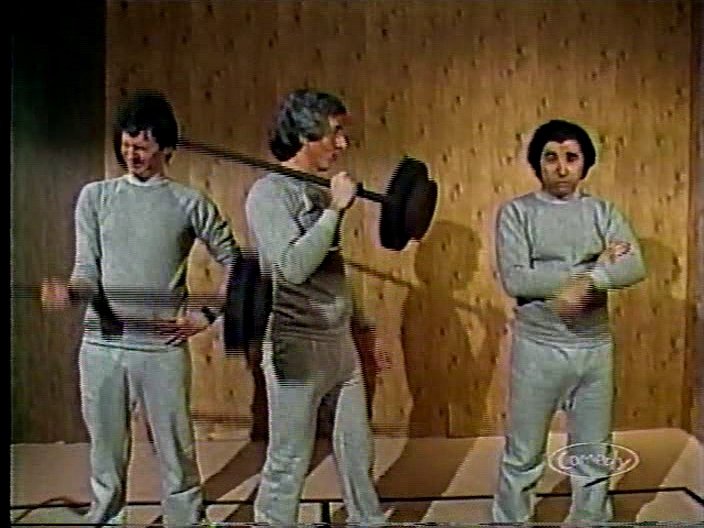
Existentialist Weightlifting
Classic SNL Review: November 13, 1982: Robert Blake / Kenny Loggins (S08E06)
Sketches include: "The Merv Griffin Show", "Little Rascals Reunion", "Space Shuttle", "PBS", "The Best Little House On The Prairie", "Tyrone Goes Reggae", "Blue Lagoon", "Masterful Theatre", "Viewer Mail", "DTV", and "No More Andy Kaufman". Kenny Loggins performs "Heart To Heart" and "I Gotta Try". Merv Griffin makes a special appearance.
Classic SNL Review: October 30, 1982: Michael Keaton / The New Joe Jackson Band (S08E05)
Sketches included "Makeup Room", "The Interesting Four", "A Sense Of Fear", "Thank You, Ron Reagan", "Snookie", "Bill Smith Cares", "Topol The Idiot", "Nutty President", and "Pumpkin".The New Joe Jackson Band performs "Steppin' Out" and "Another World".
Classic SNL Review: October 23, 1982: Howard Hesseman / Men At Work (S08E04)
Sketches include "Hallway", "Girls of SNL", "DeLorean Home", "Good Morning America", "The Confession", "Caribbean Vacation", "Naked Wake", "Uncle Teddy's Little Theatre" and "The Amazing Ronco Answer Book".Men At Work perform "Who Can It Be Now?" and "Down Under".Bill Irwin also appears.
Classic SNL Review: October 9, 1982: Ron Howard / The Clash (S08E03)
Sketches include "Federal Bureau of Weights & Measures", "Opie's Back", "Velvet Jones Romance Novels", "The Whiners", "In Quest Of...", "Focus On Film", "Hail To The Chief", "Come On Out America", "Sylvester School", "Why" and "Nukes In Dunkerton".The Clash perform "Straight To Hell" and "Should I Stay Or Should I Go".Comedy magician Harry Anderson also appears.
Classic SNL Review: October 2, 1982: Louis Gossett Jr. / George Thorogood & The Destroyers (S08E02)
Sketches include "NBC Promo", "Marine Comedy", "Hitchhiker", "Mister Robinson's Neighborhood", "Sex Therapy", "Mr. & Mrs. T Bloody Mary Mix", "Man On The Street", "Singing In The Stall", "Don's Back", "Donahue", "Trashing Jerry", "Father And Son", and "The Interesting Four". George Thorogood & The Destroyers perform "Bad To The Bone" and "Back To Wentzville". Mr. T also appears.
Classic SNL Review: September 25, 1982: Chevy Chase / Queen (S08E01)
Sketches include "Live From Burbank", "Art Opening", "Joe Takes A Wife", "Hinckley", "The Web", "Mystery Theatre", "Video Victims", "Popeil", "Late Night with David Letterman", and "PTC Club". Queen performs "Crazy Little Thing Called Love" and "Under Pressure".Cameos by John Zacherle, Danny DeVito, Gene Siskel and Roger Ebert.
SNL Up Close: 1982-83
Dick Ebersol brought Saturday Night Live back from the brink of cancellation.His first full season of SNL had its share of volatility, particularly with Michael O'Donoghue's mid-season firing, but the show stablized by the end of the season.For the next season, Ebersol and producer Bob Tischler retreated a bit from the calculated risks the show took in 1981-82: Don Pardo was back in the announcer's booth, the "live from New York" phrase opened some (but not all) of the shows this year, and hosts once again got monologue segments following the opening montage. Like with 1980-81, and 1981-82, I will be doing sketch-by-sketch reviews of the episodes this season.If anyone has information to contribute about the episodes, such as who wrote what, writer cameos, etc., I welcome it and will acknowledge my source in the sketch review.







